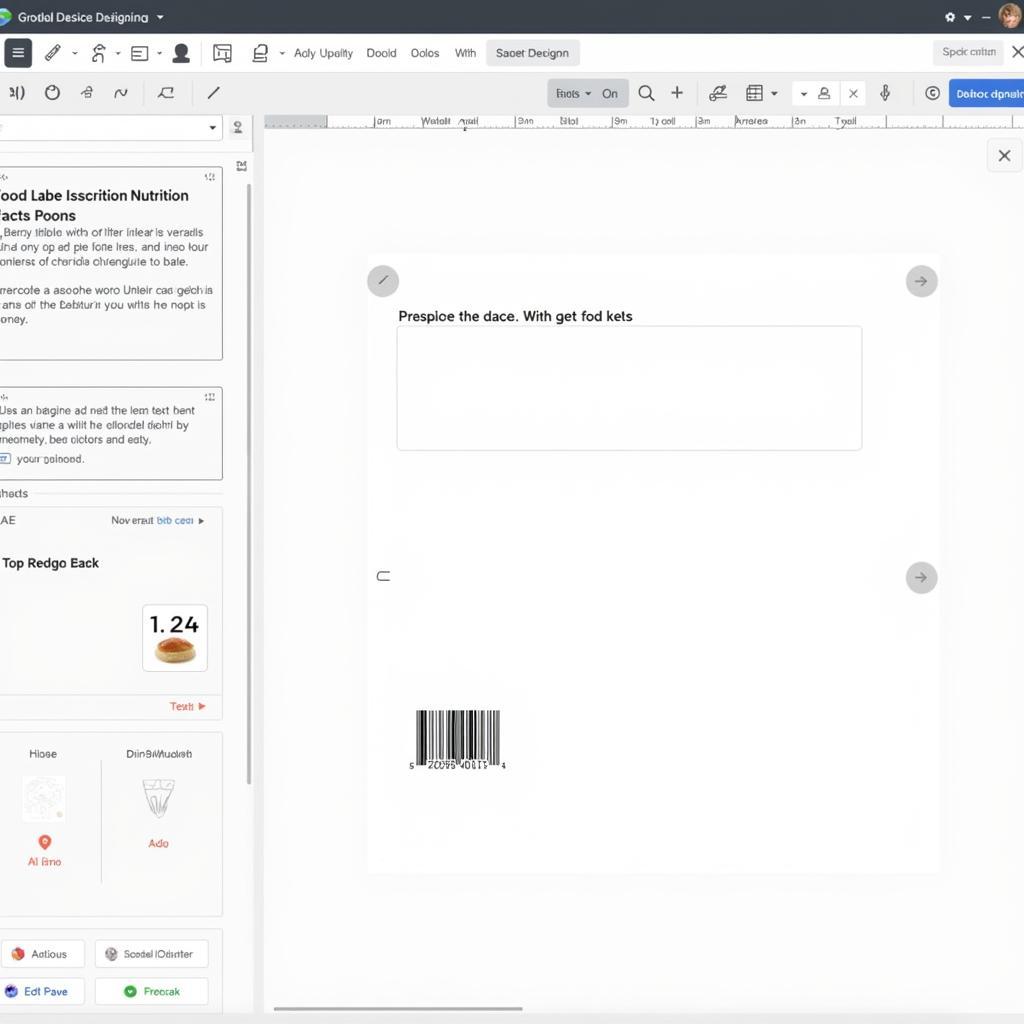Creating effective food labels is crucial for both legal compliance and consumer trust. Whether you’re a small business just starting out or a seasoned food producer looking to refine your labeling, understanding How To Make Food Labels correctly is essential. This guide will walk you through everything you need to know, from legal requirements to design tips.
Understanding Food Labeling Requirements
Food labeling regulations exist to protect consumers and ensure fair trade. These regulations vary from country to country, but generally include mandatory information such as ingredients, nutritional facts, allergens, and net weight. Before you even begin designing your label, research the specific regulations in your target market. Failure to comply can result in hefty fines and product recalls.
Key Elements of a Food Label
- Product Name: This should be clear, descriptive, and easily understood.
- Ingredient List: Ingredients must be listed in descending order of predominance by weight.
- Nutrition Facts Panel: This provides detailed information about the product’s nutritional content, including calories, fat, sugar, and protein.
- Net Weight or Volume: This indicates the quantity of food in the package.
- Allergen Information: Common allergens, such as peanuts, milk, and soy, must be clearly identified.
- Country of Origin: This informs consumers where the product was made.
- Manufacturer’s Information: This typically includes the company name and address.
Designing Your Food Label
After gathering the necessary information, you can start designing your label. An effective label not only conveys essential information but also grabs the consumer’s attention and builds brand recognition.
Tips for Effective Food Label Design
- Keep it Clean and Simple: Avoid clutter and use clear, easy-to-read fonts.
- Highlight Key Information: Make important information, such as the product name and net weight, stand out.
- Choose Appealing Colors and Graphics: The colors and images you use should reflect your brand and appeal to your target audience.
- Consider the Packaging Material: The label material should be compatible with the packaging and withstand handling and storage conditions.
Creating Food Labels with Software
Several software programs can help you create professional-looking food labels. These programs often come with pre-designed templates and allow you to customize the label with your own information and branding. Choosing the right software can streamline the label-making process and ensure consistency across your product line. You can find helpful resources on how to make food labels on our website.
Choosing the Right Software
- Consider your budget: Some software programs are free, while others require a subscription.
- Think about your design skills: If you’re not a designer, choose software that offers user-friendly templates and tools.
- Look for features specific to food labeling: Some software programs offer features for calculating nutrition facts and complying with labeling regulations.
What are the common allergens that need to be declared on a food label? Common allergens include peanuts, tree nuts, milk, eggs, soy, wheat, fish, and shellfish.
“Accurate labeling is paramount. It’s not just about following regulations; it’s about building trust with your consumers.” – Amelia Carter, Certified Food Scientist
 Using Software to Create Food Labels
Using Software to Create Food Labels
Working with a Professional Designer
If you’re not comfortable designing your own labels, consider hiring a professional designer. A designer can create a label that is both visually appealing and compliant with all regulations. For pet food, be sure the label accurately reflects the contents, as with our beef flavor dry cat food and bull terrier dog food.
“Investing in professional label design is a smart move, especially for new businesses. A well-designed label can make your product stand out on the shelf and convey quality.” – David Miller, Brand Consultant
In conclusion, creating effective food labels is a multi-faceted process that involves understanding regulations, designing appealing visuals, and choosing the right tools. By following the guidelines in this article, you can create food labels that not only meet legal requirements but also enhance your brand and build consumer trust. Learning how to make food labels properly is an investment in your business’s success.
FAQ
- What is the purpose of food labeling?
- Where can I find information on specific food labeling regulations?
- What are the common mistakes to avoid when designing food labels?
- Do I need to hire a professional designer for my food labels?
- What are some affordable software options for creating food labels?
- How can I ensure my food labels are accurate and up-to-date?
- What are the penalties for non-compliance with food labeling regulations?
Need help with premium food labeling? Check out our sana premium foods page. Also consider our lotus small bites dog food as an example of effective labeling.
For support, contact us 24/7 at Phone: 02437655121, Email: minacones@gmail.com, or visit us at 3PGH+8R9, ĐT70A, thôn Trung, Bắc Từ Liêm, Hà Nội, Việt Nam.